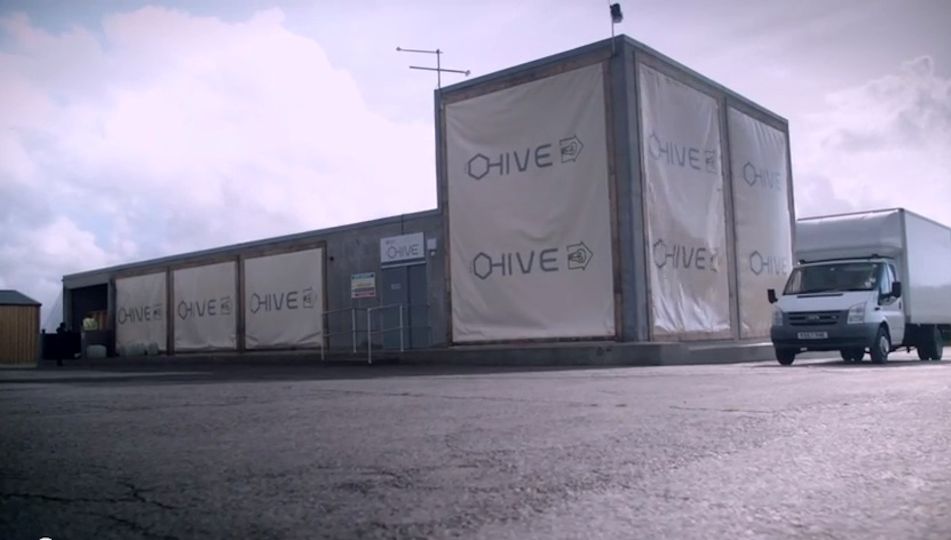The Hive
The HIVE is a building project developed at the Building Research Park designed to support research into construction materials.
The Building Research Park is an open-to-the-elements facility at Wroughton Airfield, that offers the capability of full-scale research into building materials and systems using 16 re-configurable research buildings. It is part of the BRE Centre for Innovative Construction Materials (BRE CICM).
The HIVE aims to answer fundamental questions about the resilience and performance of sustainable materials. It looks at pre-prototype solutions at Technology Readiness Level 2-5, carrying out the fundamental research that will influence industry practice and enable the uptake of innovative products and solutions. The facility is open to researchers across the world and has been designed to be completely flexible.
Facilities include:
- A controlled full-scale indoor air quality room where researchers are looking at building panels that absorb and sequester pollutants.
- A double-storey cell that allows investigation of the multi-level aspects of façade efficiency.
- The bladder cell that can be used for testing small panels.
- The flood cell which allows researchers to test the impact of flooding on building materials and systems. With increased flooding across the UK the research taking place at the HIVE can inform some of the major resilience challenges facing the UK construction industry. These include how best to dry out the materials, how much material can be salvaged and crucially how to balance the need to get people back in their homes as quickly as possible without affecting the structural performance of the building.
Projects underway at the HIVE include:
- Investigating photo-catalytic materials to harvest ambient light to generate energy.
- ECOSEE, which aims to enlarge the market for bio-based materials with negative carbon impact.
- The HEMPSEC project for market replication of a pre-fabricated hemp-lime system.
This article was created by --BRE_Buzz. It based on a post originally published on BRE Buzz in October 2015 written by Ali Nicholl.
You can see the original article here.
[edit] Find out more
[edit] Related articles on Designing Buildings Wiki
- Airtightness of energy efficient buildings.
- Anatomy of low carbon retrofits: evidence from owner-occupied superhomes.
- BRE articles on Designing Buildings Wiki.
- BRE National Solar Centre.
- BRE Üserhuus.
- Building Research Establishment BRE.
- Design for deconstruction, BRE modular show house.
- Design for deconstruction, office building.
- Pre-demolition and pre-refurbishment audits.
Featured articles and news
The UK's Modern Industrial Strategy: A 10 year plan
Previous consultation criticism, current key elements and general support with some persisting reservations.
Building Safety Regulator reforms
New roles, new staff and a new fast track service pave the way for a single construction regulator.
Architectural Technologist CPDs and Communications
CIAT CPD… and how you can do it!
Cooling centres and cool spaces
Managing extreme heat in cities by directing the public to places for heat stress relief and water sources.
Winter gardens: A brief history and warm variations
Extending the season with glass in different forms and terms.
Restoring Great Yarmouth's Winter Gardens
Transforming one of the least sustainable constructions imaginable.
Construction Skills Mission Board launch sector drive
Newly formed government and industry collaboration set strategy for recruiting an additional 100,000 construction workers a year.
New Architects Code comes into effect in September 2025
ARB Architects Code of Conduct and Practice available with ongoing consultation regarding guidance.
Welsh Skills Body (Medr) launches ambitious plan
The new skills body brings together funding and regulation of tertiary education and research for the devolved nation.
Paul Gandy FCIOB announced as next CIOB President
Former Tilbury Douglas CEO takes helm.
UK Infrastructure: A 10 Year Strategy. In brief with reactions
With the National Infrastructure and Service Transformation Authority (NISTA).
Ebenezer Howard: inventor of the garden city. Book review.
The Grenfell Tower fire, eight years on
A time to pause and reflect as Dubai tower block fire reported just before anniversary.
Airtightness Topic Guide BSRIA TG 27/2025
Explaining the basics of airtightness, what it is, why it's important, when it's required and how it's carried out.
Construction contract awards hit lowest point of 2025
Plummeting for second consecutive month, intensifying concerns for housing and infrastructure goals.
Understanding Mental Health in the Built Environment 2025
Examining the state of mental health in construction, shedding light on levels of stress, anxiety and depression.























